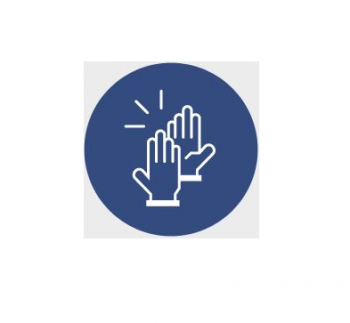When patients’ lives are in the balance, requiring quick action from Emergency Department staff and physicians, there isn’t time to step back and troubleshoot a particular procedure or protocol. Simulations provide an opportunity for this type of reflection and evaluation. Several physicians from the Emergency Department at Victoria General Hospital initiated a series of cross-departmental simulations to bring together not only the emergency department staff, but also the various specialties that interact around a patient’s bedside.
Over the last year, 1-2 simulations were held each month, involving not only Emergency Department physicians, but also Pediatric Intensive Care docs, PICU and NICU nurses, pediatricians, hematopathologists, anesthesiologists, adult intensivists, respiratory therapists, ECG and lab technicians, as well as more than 40 different emergency department nurses. Each scenario was attended by a clinical nurse educator to summarize the scenario and lessons learned to ensure any insights or actionable items were disseminated to all emergency department staff. The group also filmed each simulation so that those not able to attend on the day could still learn from the experience.
Through these exercises, the group identified a number of actionable items that have changed the way they deliver care in the emergency department. of the most significant of these was the trialing, troubleshooting and implementation of a Massive Transfusion Protocol that had been developed by the Hematopathology department and Trauma services. Previously, if a patient was seriously injured and bleeding critically, the emergency department staff did not have a way to get blood products into the trauma bay before the patient had arrived. This could mean crucial time spent waiting for blood. As a result of the simulation work, the team, including a nurse and technician from transfusion medicine as well as Dr. Brian Berry, Hematopathologist, agreed that a protocol was needed so that blood products would be waiting for the patient upon arrival – a change that could mean the difference between life and death.
These changes also included insights into providing better care during a suspected or confirmed COVID-19 case. Previously, communication between the treatment room and the trauma bay was relatively open. However, with the need for greater precautions during COVID, the group realized that safe communication was challenging. Taking extra time to go in and out of the negative pressure room to order tests or bring in new medications or supplies negatively impacted efficient patient care. The group determined that a phone should be placed in the trauma bay, connected to the physician providing treatment. By simply speaking orders using ear bud earphones, the physician could then communicate all needs instantaneously to the group outside.
In addition to practice changes, a major benefit cited after each session was improved communication between different departments and with allied health staff. “There are specialties that we see more often, but I’ve never really spoken to hematopathology about systems of care in the emergency room, or ICU, or anesthesia, so to have these specialties, both doctors and nurses, in these simulations and available to debrief afterwards, was great”, said Dr. Matt Carere, Emergency Room Physician.
Speaking about the value of the funding, Dr. Carere underscored how critical it was to cover people’s time: “Everyone is very conscious of their time and it’s hard to get anyone to come in for two hours before or after a shift if there’s no remuneration. The buy-in has drastically changed since the funding was announced.”
The group plans to continue the simulations in the future as well as collect more specific evaluation data about how participation for emergency room staff can impact on job satisfaction and engagement with colleagues from other disciplines.

